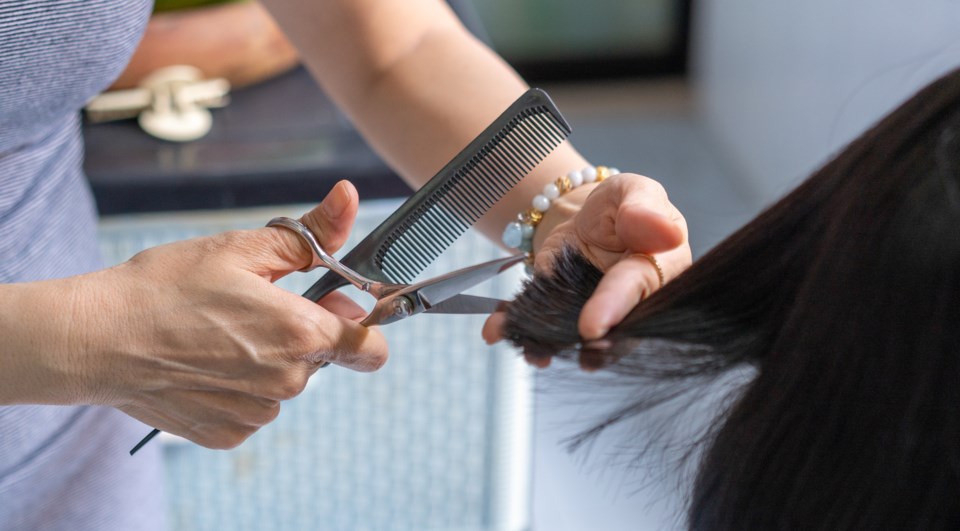When a Penticton man's hairstylist wife gave him his usual trim, he had no idea it was going to change his life and feed into a new national project aimed at tackling skin cancer.
Brian Dunn, who co-owns Penticton's Beauty on the Beach with his wife Janice, was getting his hair cut when Janice noticed a suspicious looking dark mark under one of his sideburns.
"I'm like, yeah, whatever. Probably nothing," Dunn said. "And then one day, I was taking my shirt off, and it was like, 'What the hell' — it had started bleeding. And then all of a sudden it started to grow."
Dunn and his wife reached out to Kathy Barnard, founder of the Save Your Skin Foundation dedicated to fighting skin cancer, who is also their neighbour in Penticton. She got him hooked up with a specialist, and sure enough, the dark spot was melanoma, and he was scheduled for surgery.
"They removed half my face. They put it back, thank God," Dunn said.
Unfortunately, while the melanoma was removed, there appear to be cancerous cells in his lymph nodes. Dunn is awaiting results on those tests, but is extremely grateful the growth on his head was caught early.
That's where a new program from Save Your Skin comes in.
Barnard, who herself is a skin cancer survivor, is launching "Styling Hair and Saving Lives," offering free training for hair stylists and barbers nationwide who want to learn to spot any marks on their clients that look suspicious.
"We want earlier detection of those potentially dangerous skin cancers, and really the goal is for hairdressers and barbers to help detect, and not to diagnose by any stretch," Barnard said, emphasizing the training is merely to spot anything suspicious.
"It's really if they see an odd skin lesion to make sure the patients know about it and and hopefully they'll go have it seen by a medical profession," Barnard explained.
She said the top of the head, back of neck and behind ear areas are often the most difficult areas for a person to spot an unusual mole for themselves, but barbers have a first look.
"There's something like 80,000 new cases of skin cancer in Canada every year, skin cancer is really on the rise. And it's hitting our younger demographics more than ever. Early detection is key. And that's what this program does," Barnard said.
The program is run with the assistance of two medical students from the Northern Ontario School of Medicine. All hair professionals in Canada are eligible to participate and registration is free.
So far, 70 salons nationwide have signed up. Barnard has had the idea in mind for several years, after she had her own experience with her hairstylist.
"About five years ago, I went into my hairdresser and she said, 'You know, you've get a funny spot right up on the top of your head,'" Barnard said.
"So I said 'Can you take a picture of that?' because I can't see it up there, nobody can see it, it's a lot of hair. And it turned out to be an advanced basal cell carcinoma that I had to rush in and get surgery to have it taken out."
Dunn has also long been an advocate of hairdressers watching out for anomalies, even before his own brush with skin cancer. He says the "Styling Hair and Saving Lives" program should be required learning for cosmetology schools everywhere.
"I think it's the greatest thing," Dunn said.
"We spotted it early enough and got into a doctor that diagnosed it and did what he had to do fast enough. That's why I got rid of my melanoma."
Barnard hopes to expand the program in coming years to not just hair stylists, but others in jobs that work closely with skin, like tattoo artists, massage therapists, and more.
"I always say, your skin is an organ, like your liver and your lungs. And it's the one you see. And if you don't see it, you know somebody else who does," Barnard said.
Find out more about the Save Your Skin Foundation and the "Styling Hair and Saving Lives" online.



